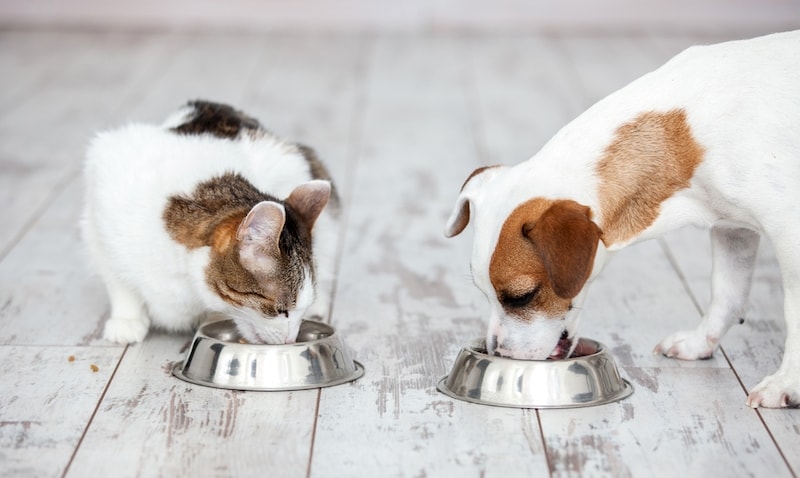Email Address
Info@themis.com
Phone Number
Fax: 001 (407) 901-6400

Many of us, when buying a pet, be it a cat or a dog, at the initial stage of living together with him, are puzzled by the question: How and what to feed a pet? This question is simple at first glance. But it is fundamental from the point of view of the entire future life of the pet.
As a rule, turning to the owners of dogs and cats for advice, you can hear different opinions, but almost all of them will revolve around an alternative: feed your pet industrial food, or natural ingredients (meat, fish, cereals). Unfortunately, this approach does not reveal the essence in understanding proper nutrition.
Let’s try to reveal the most important thing that every successful or future owner of a four-legged friend should know.
All living creatures on our planet eat for one target – in order to get the necessary substances into the body, allowing it to grow, develop, multiply, and carry out vital activities prescribed by nature. All of these substances are known and are called nutrients. Nutrients are the components of any food that are necessary for the functioning of the body.
It is conditionally possible to divide all nutrients into six main groups in order to subsequently understand what role each of them plays:
The first most important nutrient is water. It is well known that any living organism cannot exist without water. It is water that is the basis of all processes occurring in the body of a pet animal, such as metabolism, blood circulation and so on.
The second need, not far removed from the first, is the need of a cat or dog for energy which each in its quantity provides fats, carbohydrates and proteins.
As for fats, their main tasks in the animal's body can be defined as follows:
Carbohydrates, like fats, are a source of energy for a cat or dog. Indigestible carbohydrates, the so-called fiber, contribute to the elimination of unnecessary substances from the body and regulates body weight. Proteins are needed for the construction of almost all types of tissue.
Finally, minerals with vitamins. Phosphorus and calcium (the first among the useful minerals in pet food) are the basis of bone tissue. Their balance in the body ensures the normal development and strength of the bones. Vitamins, in turn, perform a huge variety of functions. They participate in the processes of formation of all types of tissues, are antioxidants, protect the immune system, regulate the metabolism in the body and much more.
In a word, based on even the brief functionality of nutrients, it is obvious that they are all vital for your pets. But if the amount of water necessary for the body in a given period of time your cat and dog can independently determine (subject to constant access to it), then you determine the necessary and sufficient amount of other nutrients by bringing him a bowl of food. And both a deficiency and an excess of one or another nutrient can be a cause of developmental disorders, deviations from the norm or lead to disease.
For example, a lack of calcium will inevitably lead to bone fragility, and its excess in the body can cause skeletal diseases. Excess protein and minerals will sooner or later lead to kidney and liver diseases. Protein / feline protein deficiency will play a fatal role in the development of animal muscle mass and lead to irreversible consequences.
If we summarize all of the above then the answer to the question posed at the beginning suggests itself. Feeding a cat or dog properly means feeding it in a balanced way. It is necessary to satisfy all the current needs of the body, and how – does not matter at all. Understanding this, each owner of the animal independently decides for himself whether, based on his own experience and knowledge in the field of dietetics, as well as having the necessary amount of time, he can provide a balanced diet for his pet using natural ingredients. Or he will draw on the experience of professionals in the production of balanced feed.